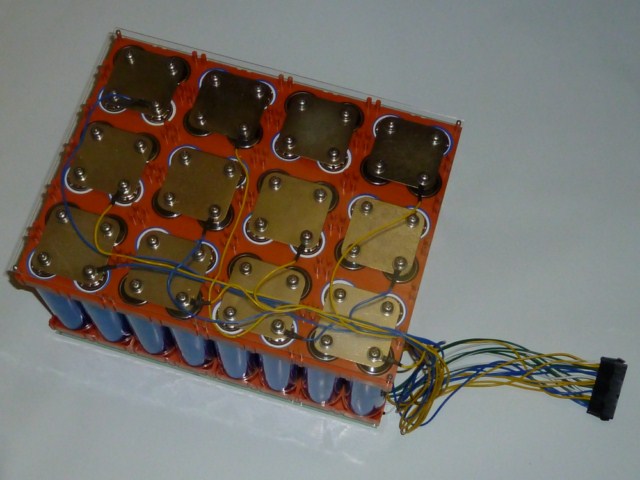EBJ said:
another question:
Gary uses an LVC/parallel adapter to parallel his Balance wires. Is this needed? How is this LVC different than a motor-controller lvc?
Perhaps: This "adapter" is acting as a lvc at the cell-state? where as the controller lvc is acting as an lvc at the entire pack state?
Thanks.
Yes, this is so you can have LVC protection at the cell level. This protects against the case where you might end up not as many packs in parallel, for instance, due to a faulty/broken connector. In this sort of situation, the cells will run out quicker than you think, and die before you can do anything about it. Pack level LVC functions are mainly designed for lead acid setups, where the voltage is reduced somewhat uniformly as the capacity is used. Lithium cells are different. Their voltage will stay pretty close to the nominal level all the way until the end, and then it drops quickly (within seconds...). If you don't catch it, the cells can go all the way to zero, which is called cell reversal, and they are dead after that. It is like the voltage drops off a "cliff".
If you have a badly balanced pack, some cells could get down to this "cliff diving" point while the overall pack voltage is still above the controller's pack level LVC trip point. For instance, if you have a 48V controller, and the pack level LVC is set to, say, 40V, you could have the case where 11 cell groups, of a 12s-based LiPo pack, are still at 3.7V but one cell group is at 0V, and still the overall pack voltage will be above the 40V controller LVC trip point.
What the individual cell LVC circuits do is simply monitor the voltage of each cell, or group of paralleled cells, and if the voltage dips too far down (3.0V for LiPo and 2.1V for LiFePO4...), an optocoupled switch is thrown. All of these "switches" are paralleled together and then connected to the throttle signal and ground. The net effect is that if any cell's circuit trips, it will pull down the throttle signal, which cuts the load. This will cause the cell voltage to recover above the cutoff, which resets the circuit and turns off the "switch". If you still are full on the throttle, it will cause the low cell circuit to trip again, which again cuts the throttle. What I've found with a typical 10Ah LiPo pack, and also with 10Ah LiFePO4 setups, is that the first time the LVC trips, it "hits" the throttle, like a big tuna strike.

If you back off the throttle about halfway, you can go another couple miles, or so, (depends on your usage, of course...), until giving it any throttle at all will cause this hit and recover cycle, which happens at about a 1-2 Hz rate. I've checked the capacity and usually when I get the first "strike", there's about 10% left in the "tank". If I let it go to where any throttle at causes the stuttering, it will take the full capacity of the pack on a charge.
I found it convenient to also include the parallel adapter right on the same board, which simply saves one extra set of wires. Some people make use of it, some people don't. Also, what I offer is a kit, which requires that you solder the parts to the board (3.5 parts per channel...). You can also buy a preassembled LVC-only board from Geoff, in the UK. You'd need to do the parallel adapter separate.
Another option for cell level LVC protection is to use something like a CellLog unit, which has a programmable LVC function which then turns on a buzzer. As long as you can have the CellLogs close enough to hear the buzzer, while you ride, this will work fine.



